Chainsaw carburetors are the mechanisms that allow chainsaws to function. They are responsible for the saw’s fuel mixture, air intake, and air output. A chainsaw carburetor is a vital component of a chainsaw.
It helps the chainsaw to run properly and efficiently. A chainsaw carburetor needs to clean regularly to keep it running smoothly. This helps to extend the life of the carburetor and ensure that it remains in good working condition.
If your chainsaw is not running right or you notice it lacks power, chances are it’s time for carburetor cleaning. But before we get into the nitty-gritty of how to clean a chainsaw carburetor, let’s understand what one is and why you should be doing this regularly. Here we will discuss how to clean a chainsaw carburetor without removing it.
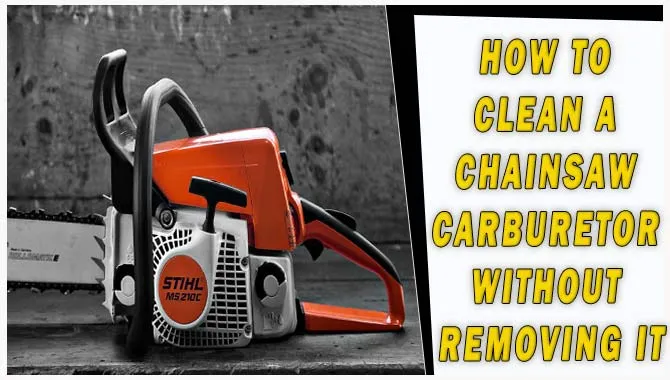
Signs That Your Chainsaw Carburetor Needs Cleaning
Cleaning the carburetor of your chainsaw is an important maintenance task that can help keep your chainsaw running smoothly. Signs that your chainsaw carburetor may need cleaning include:
- Difficulty starting the chainsaw or it won’t start at all
- The engine runs poorly or stalls frequently
- The chainsaw loses power during operation
- The chainsaw emits black smoke from the exhaust
If you notice any of these signs, it’s a good idea to clean the carburetor. Cleaning the carburetor without removing it can be done using a carburetor cleaner spray. Simply remove the air filter and spray the cleaner into the air intake while the engine is running. This will help dissolve any built-up gunk and debris in the carburetor. Be sure to follow the instructions on the cleaner spray and take proper safety precautions while working with power tools.
Precautions To Take During The Cleaning Process
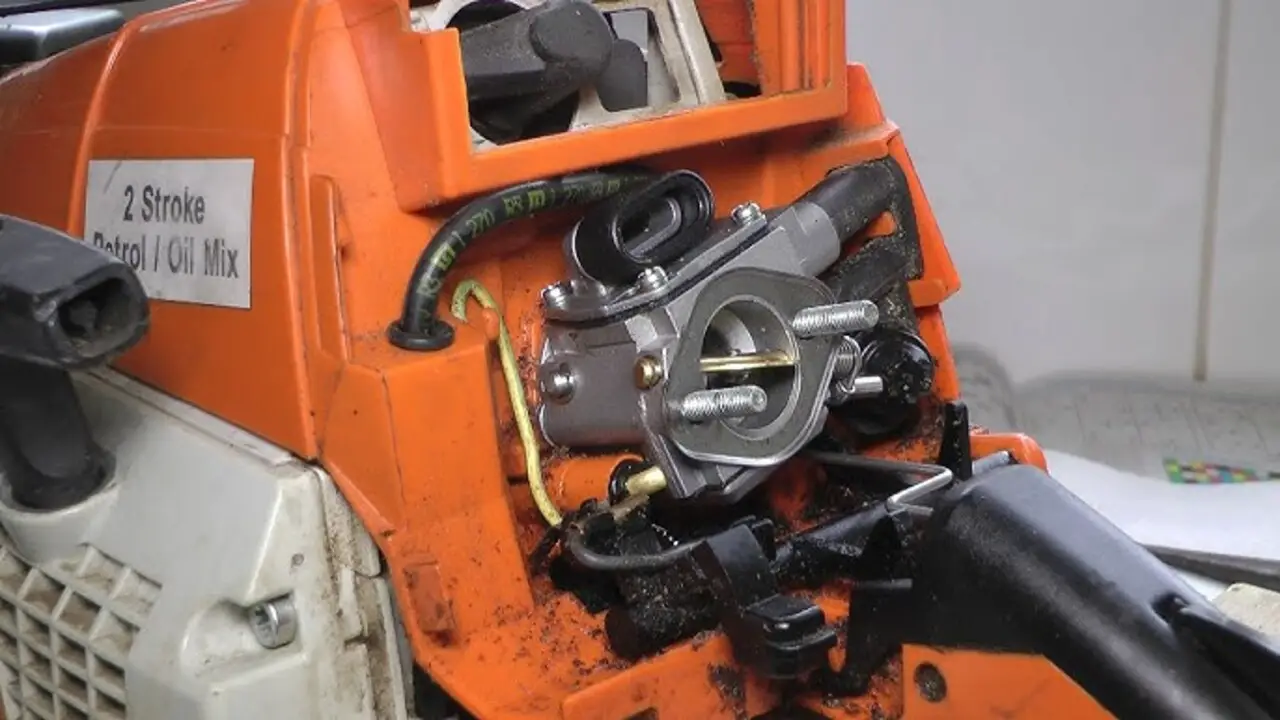
When cleaning a chainsaw carburetor without removing it, it is important to take certain precautions to ensure the safety and effectiveness of the cleaning process. Here are some precautions to keep in mind:
- Always wear protective gear, such as gloves and safety goggles, to protect yourself from any potential harm.
- Make sure that the chainsaw is turned off and the spark plug is disconnected before starting the cleaning process.
- Use a carburetor cleaner specifically designed for small engines. Follow the manufacturer’s instructions carefully when applying the cleaner.
- Avoid using excessive force or harsh tools that could damage the carburetor. Instead, use a soft brush or toothbrush to gently scrub away any dirt or debris.
- Take your time and be thorough in your cleaning, paying attention to all the different components of the carburetor.
- Once you have finished cleaning, reassemble the carburetor carefully, making sure that all parts are properly aligned and tightened.
By following these precautions, you can safely and effectively clean your chainsaw carburetor without having to remove it.
Tools And Materials Needed To Clean The Carburetor Without Removal
The chainsaw carburetor is a critical component of any chainsaw. It is responsible for mixing the right amount of fuel and air to ensure that the engine runs smoothly and efficiently. Cleaning a carburetor can be daunting, especially if you’re not an experienced mechanic. Fortunately, it is possible to clean the carburetor without removing it from the engine. Here are some tools and materials you’ll need to get started:
- Carburetor Cleaner: This is the most important material you’ll need for cleaning your carburetor. It’s designed to dissolve dirt and grime buildup that can clog up the carburetor.
- Screwdriver: You’ll need a screwdriver to remove the air filter cover and access the carburetor.
- Soft-Bristled Brush: A soft-bristled brush can be used to gently scrub away any remaining grime or debris.
- Compressed Air: Compressed air can be used to blow out any small particles of dirt or debris that may still be lingering in the carburetor.
- With these tools and materials in hand, you’ll be well on your way to cleaning your carburetor without removal. Just remember to take your time and work carefully, as cleaning a carburetor can be a delicate process.
How To Clean A Chainsaw Carburetor Without Removing It- 4 Steps

Chainsaw carburetors can become clogged with debris, preventing the engine from running smoothly. This can cause the chainsaw to start quickly and struggle to cut through materials, leading to accidents. If you have a small spark-ignited gas chain saw, cleaning the carburetor is easy and does not require removing it from the engine. How to clean a chainsaw carburetor without removing it, follow these four simple steps:
1. Blend The Cleaner With Gas
If your chainsaw carburetor is clogged with dirt, tree sap, or other debris, it can significantly reduce the engine’s performance and lead to serious damage. Instead of cleaning the carburetor completely, it is best to clean it using a cleaner that is safe for use with gas.
This will help ensure that the cleaner does not harm the engine. First, blend the cleaner with gas to clean a chainsaw carburetor without removing it. Then, use a straw to spray the cleaner into the carburetor while turning the chainsaw blades. Finally, use a wire brush to scrub the inside of the carburetor to remove any remaining debris. You can ensure its long-term performance and longevity by cleaning your chainsaw carburetor using safe methods.
2. Run Your Chainsaw At An Idle Or Slow Speed
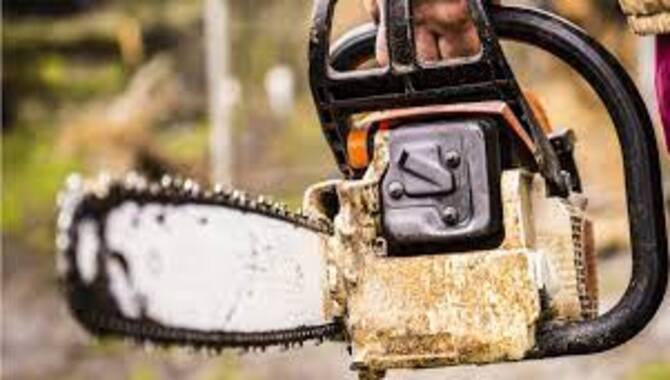
Chainsaw carburetors can become clogged with debris and sediment, reducing performance and increasing the risk of injury. To clean the carburetor and avoid damage, run your chainsaw idle or slow. A good way to ensure the cleaning process is effective is to use a carburetor cleaner designed for chainsaws.
These cleaning agents are safe in the carburetor and effectively remove excess grime and buildup from the internal components. However, be careful not to allow water or other liquid into the carburetor – this could cause damage. Additionally, wear protective gear, such as safety glasses and gloves, when cleaning the carburetor.
3. Clean The Pilot Air Jet
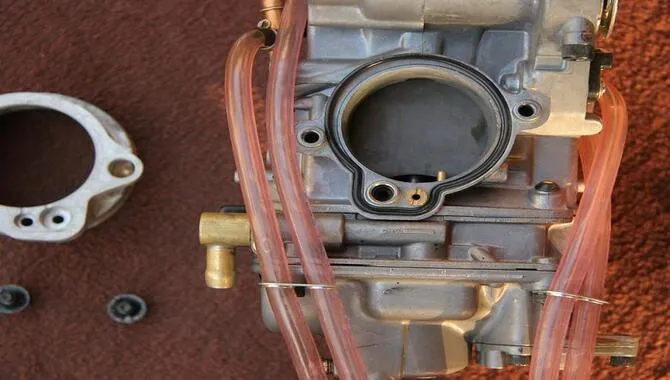
The pilot air jet is located on the top of the carburetor and helps to atomize the fuel into the engine. If this component becomes clogged, it can significantly reduce performance and potentially lead to a fire. First, remove any debris that may lodge within the jet mechanism to clean the pilot air jet.
Then, use a cleaner designed for carburetors to flush out any cleaning solution or residue. Finally, dry off the jet with a cloth before re-installing it onto the carburetor. Be sure to replace the carburetor filter when cleaning is complete.
4. Test Your Chainsaw

Once cleaning is complete, test your chainsaw’s performance by running it idle or slow. The carburetor is clean and debris-free if the engine appears to run smoothly and without lag. However, if there are any issues with performance – such as reduced power or a lack of spark – you will need to take additional steps to clean the carburetor.
How Does A Chainsaw Carburetor Work?
A chainsaw carburetor is an important part of a chainsaw’s engine. It’s a small piece of hardware that helps a chainsaw carburetor function properly and deliver consistent fuel intake to the engine. The chainsaw carburetor usually sits on the engine and is connected to the air filter housing.
When you remove the air filter housing from your chainsaw, you can access the chainsaw carburetor and clean it using various cleaning agents. Make sure to replace the chain if it has been dirty for a long period, as this can affect its performance. Also, keep your chainsaw carburetor free from debris so it can work efficiently and last longer.
How To Clean The Carburetor
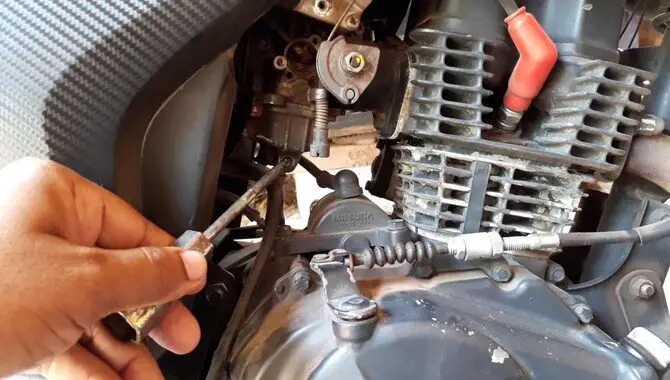
If your carburetor is gummed up with gunk and doesn’t seem to be working properly, you’ll need to take it in for cleaning. Carburetors are a vital part of an engine; if they’re not cleaned regularly, they can wear out and become less effective. Carburetors are often neglected in maintenance, leading to problems down the line. Here are a few tips on how to clean carburetors:
Clean The Air Filter
Before cleaning the carburetor, it’s important to clean the air filter. This will remove any debris that may have built up on the filter over time. It is vital to clean the carburetor regularly to prevent clogging and performance issues.
When cleaning the carburetor, it is important to clean the air filter first. This can do by gently removing the air filter and cleaning it with a wet cloth or spray cleaner. After cleaning the air filter, replace it and screw the carburetor bowl back on. Most chainsaw carburetors come with an air filter cover, which you can use to remove and replace the air filter.
Clean The Carburetor’s Intake Components
Cleaning the intake components of a carburetor can help ensure optimal performance and efficiency. To clean the intake components, first, remove the air filter. After cleaning the air filter, unscrew the carburetor cover and remove the fuel bowl.
Clean the intake components with a solvent or compressed air and replace the fuel bowl and cover to complete the cleaning. This procedure can help keep your carburetor running at its peak performance. Besides, it will help reduce emissions and improve air quality in your vehicle.
Clean/Wash The Carburetor’s Needle Valves
First, remove the needle valves to clean the carburetor without removing them. To do this, use needle-nose pliers to unscrew the valve caps and pull them off. Next, use a plunger to suction onto the valve and pull it out. Finally, use a vacuum cleaner to clean the carburetor. This simple procedure will remove dirt, debris, and oil from the carburetor’s needle valves. By cleaning the carburetor this way, you can maintain its efficiency and performance.
Work The Pull Cord
There are several ways to clean a chainsaw carburetor without removing it. One method is to work the pull cord. This allows you to dislodge debris and dirt without removing the carburetor. Another method is to use a vacuum cleaner, which can be helpful if you only have small amounts of debris to remove.
Alternatively, if you need to remove the carburetor, use a carburetor cleaner for chainsaw use. These products are specially designed for cleaning carburetors and other small engine parts and are safe for gas engines. They will efficiently clean out the residue from your carburetor and restore its performance quickly and easily.
Drain The Old Fuel And Add Fresh Fuel
After cleaning the carburetor, replacing the fuel bowl and cover is important. This will help prevent dirt and debris from accumulating over time. To do this, first, drain the old fuel from the carburetor. Next, unscrew the fuel bowl and remove it. Finally, screw on the new fuel bowl and cover. By replacing these components, you will ensure that your carburetor continues to run smoothly and efficiently.
Importance Of Maintaining A Clean Chainsaw Carburetor
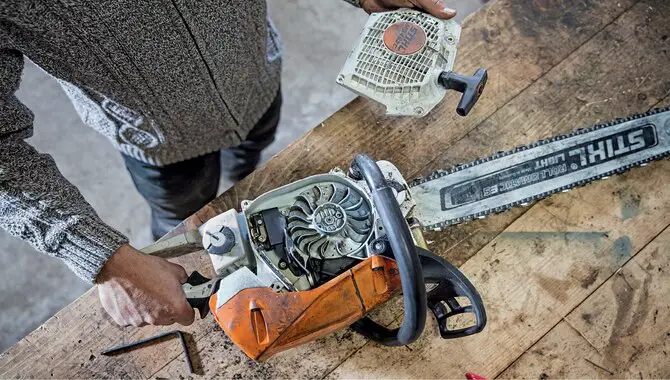
Maintaining a clean chainsaw carburetor is essential for the proper functioning of your chainsaw. A dirty or clogged carburetor can cause the engine to run poorly, which can lead to decreased performance and even damage to the machine. Over time, dirt, debris, and old gas can accumulate in the carburetor, causing it to become clogged and difficult to start.
It is important to avoid getting any cleaner on the oxygen sensors or catalytic converters. Once you have cleaned all visible areas, reconnect the gas tank and spark plug wire and test your chainsaw’s performance. Remember to always wear protective gear when working with power tools, including gloves and eye protection.
Conclusion
Chainsaw carburetors are one of the most common parts that must replace on a chainsaw. They help the engine run more smoothly by regulating the air that’s fed into it. If you don’t replace your chainsaw carburetor regularly, it can cause problems like poor performance, roughness in the saw blade, and even a reduction in fuel efficiency.
Cleaning your chainsaw carburetor without removing it is the safest way to clean it. Make sure to wear gloves and eye protection when cleaning, and be careful not to get the cleaner on the chain or blades. If your chainsaw doesn’t start after cleaning the carburetor, or if a strange smell or smoke is coming from it, then your carburetor may need to be replaced. We hope now you now how to clean a chainsaw carburetor without removing it.
Frequently Asked Questions
Do I Need To Remove The Carburetor From My Chainsaw To Clean It?
You do not need to remove the carburetor from your chainsaw to clean it. A chainsaw cleaner and water are usually enough to get the job done. Make sure to dry the carburetor thoroughly before re-installation.
What Are The Dangers Of Cleaning The Carburetor On A Chainsaw Without Removing It?
You’re risking serious damage to your engine and chain if you’re cleaning the carburetor on a chainsaw using an appropriate cleaning tool. Not only that but cleaning the carburetor without first removing it can also cause the carburetor to break. So if you’re cleaning the carburetor on a chainsaw, take it off first.
What Are The Benefits Of Cleaning My Chainsaw Carburetor Without Removing It?
Cleaning your chainsaw carburetor without removing it is easier and less time-consuming. You can clean the entire carburetor with this method. This method is also safer than cleaning the carburetor with a carburetor cleaner.
Is any risk involved in cleaning a Chainsaw Carburetor Without Removing It?
A small risk is involved in cleaning a chainsaw carburetor without removing it. However, the risk can typically eliminate by following the instructions below. First, wear gloves and eye protection when cleaning the carburetor. Second, pour a small carburetor cleaner into a bucket or bowl.
Dissolve the cleaner in water before adding it to the carburetor. Finally, immerse the carburetor in the cleaner solution and turn the chainsaw on. Be very careful not to get the cleaner on the chain or blades.
How Do I Know If My Chainsaw Carburetor Is Bad?
If your chainsaw carburetor is bad, it will probably not start. Additionally, the carburetor may emit a strange smell or smoke when you try to start the chainsaw. If either of these things happens, your carburetor needs to replace.

I am passionate about tools and electric work. I love finding new tools and experimenting with them.

